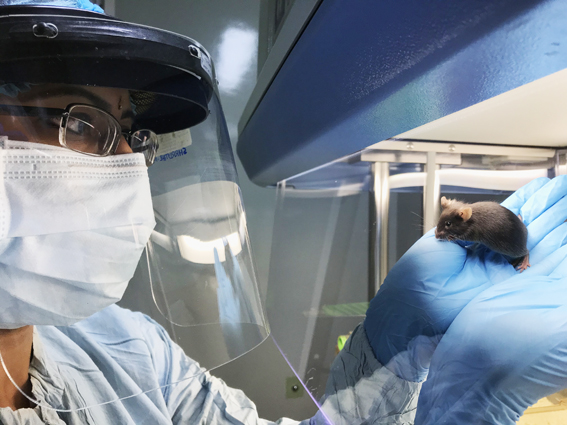Generating Mouse Models to Study COVID-19
CONTACT: https://www.ncbs.res.in/research-facilities/acrc
Available Models
Transgenic: Tg(K18-hACE2)/Blisc mouse.
hACE2 mouse model we are generating is a Targeted Knock-IN hACE2-KI/Blisc
mAce2 Knock OUT mice
There are no cell culture systems that can reproduce the complex interactions that take place during the pathogenesis of the SARS-CoV-2 virus. These processes affect multiple tissues and has a systemic effect, and inflammation has been shown to be a major contributor to tissue damage. To date there is no in vitro system capable of reproducing these interactions that recapitulate what happens in the human disease. In addition, the Department of Biotechnology, Govt. of India (DBT) has issued a call to generate models for this disease to increase our understanding of the viral life cycle and pathogenesis. Mice are the predominant model to study in vivo processes in laboratories across the world, but they lack the receptor on their cells (called ACE2) that SARS-CoV-2 uses to enter human cells. With major support from the National Mouse Resource grant from the DBT, the campus Mouse Genome Engineering Facility and Animal Care and Resource Centre were able to use the state-of-the-art infrastructure along with highly skilled personnel to rapidly deploy these resources to generate mouse models of COVID-19 infection. In general, we have generated three so-called ‘humanized’ mice wherein the mice express the human version of ACE2, thereby rendering the animal susceptible to infection by the SARS-CoV-2 virus. The vector carrying the human ACE2-coding sequence into wild-type mice was developed in the laboratory of Paul McCray at the University of Iowa and obtained through Prof. Sudhanshu Vrati from the Regional Centre for Biotechnology. These animals will be shared with academic and biotech researchers nationwide to facilitate their projects to identify new diagnostics, therapies and vaccines to combat COVID-19 infection. Further information about these mouse models can be found at https://www.ncbs.res.in/research-facilities/acrc.
In addition, the facility staff is lending their expertise to industry by serving as co-principal investigators on a DBT funded project to develop other strains of mice that would be useful to study the efficacy of different vaccines or treatments.

Image Credit: Aurelie (Lily) Jory (in charge of the Mouse Genome Engineering Facility)


